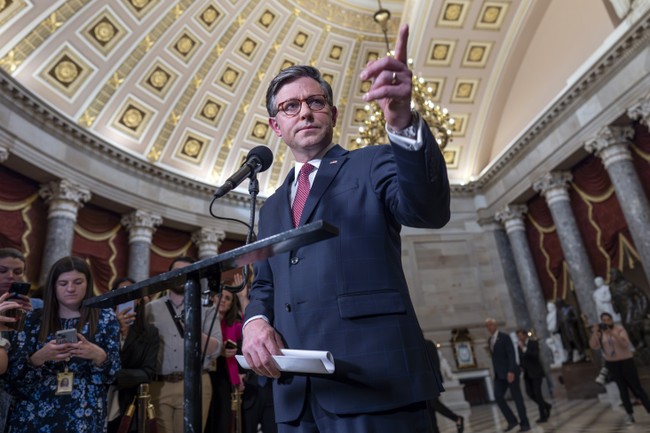We support our Publishers and Content Creators. You can view this story on their website by CLICKING HERE.

As we all know, the presidential election is looking very close though some observers have recently suggested pollsters might be “herding” a bit to avoid embarrassment and thereby misleading people about the true state of the race. Meanwhile, the battle to control the US House is also looking very close.
Advertisement
Public and private polling, as well as interviews with strategists and operatives in both parties, point to one of the tightest contests yet for the House majority, which Republicans now hold by a mere four seats. While the vast majority of the 435 seats in the House are not in play, the roughly two dozen that are being contested are truly up for grabs. Of the 22 races rated most competitive by the nonpartisan Cook Political Report, 20 are within the margin of error in internal Democratic polling…
The battlefield includes centrist Democratic incumbents in Maine, Washington, Alaska and Pennsylvania who are trying to hang on in their rural districts that favor former President Donald J. Trump and Midwestern Republicans facing unexpectedly steep challenges in Nebraska, Iowa and Wisconsin.
Because there are so many close races and so few flips are needed to determine control of the House, you can really make the case that any of these races will determine the outcome. For instance, in New York:
Half a dozen suburban swing districts in New York state likely hold the key to control of the US House next year.
Five of these districts are held by first-term Republicans, who carved out upset victories in the 2022 midterm elections on the back of voter concerns over crime, inflation and immigration.
But after facing criticism over party in-fighting and electoral infrastructure, Democratic leaders have invested millions into their New York operation this time around and are banking on high presidential election-year turnout.
Advertisement
Alternatively, there are some close races in California that could determine the outcome.
In California, Representative John Duarte, a freshman from the Central Valley, is seen as the party’s most vulnerable member. A number of the other seats, including those held by Representative Michelle Steel in Orange County, one of the first Korean American women to serve in Congress and a prodigious fund-raiser, and Mike Garcia, a former Navy combat pilot in the Antelope Valley, are hotly contested.
As of now, Cook Political Report says if the parties split the 22 competitive seats evenly, Republicans would maintain narrow control of the House.
At the moment, Republicans hold 221 seats to Democrats’ 214. In our final House race ratings, Democrats are favored in 205 seats, while Republicans are favored in 208, leaving 22 seats in the Toss Up column. If the Toss Ups split down the middle, Republicans would maintain their majority by an even narrower 219 to 216 seat margin.
Though Republicans are favored in a few more seats, they also have a lower ceiling, since they’re defending more competitive territory. If Republicans sweep the Toss Ups, they’d pick up nine seats, while if Democrats sweep the Toss Ups they would pick up 13 seats.
Advertisement
Because this is a presidential election year, it’s very possible that the outcome of these close races could be swayed by who wins the presidential race. But as I said at the top, the top race still looks very close. So we can’t guess at who wins the House with much accuracy because, at the moment, the polls don’t show a clear preference for president. Bottom line, if Trump wins, the GOP probably retains the House. If he loses, they are more likely to lose the House. If the polls can be believed, the whole thing rests on a knife’s edge.

 Conservative
Conservative  Search
Search Trending
Trending Current News
Current News 







